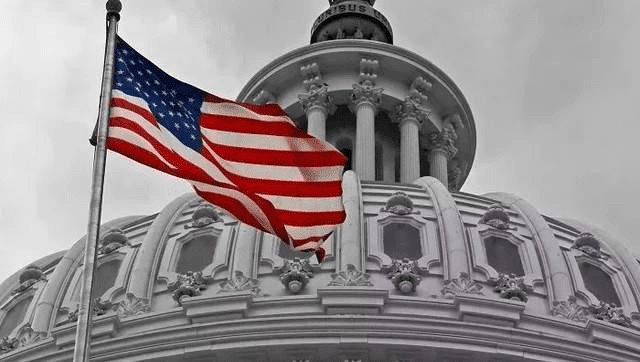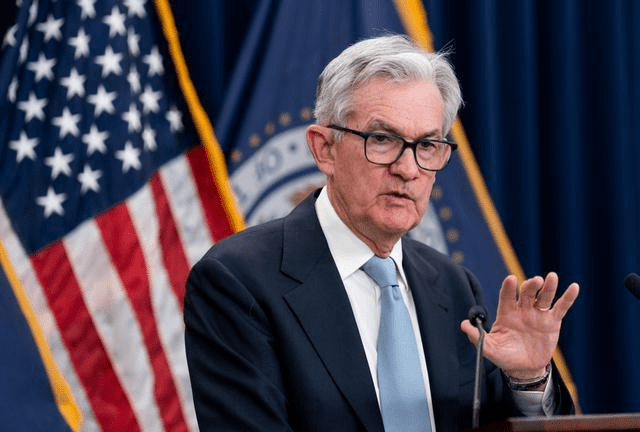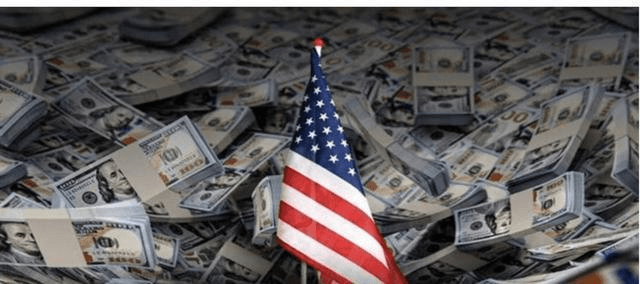Recently, the Fed's every move has affected the nerves of the global economy. As soon as the news of the interest rate cut came out, it immediately triggered heated discussions from all walks of life. Some people cheered and thought that a new round of wealth feast was about to begin; others were worried that this was just the calm before the storm. As ordinary people, how should we view this economic drama? Should we prepare to enter the market or continue to be a spectator?
Speaking of the Federal Reserve, it is truly a "big boss" among "big bosses". If it sneezes, the global economy will catch a cold. Just recently, the Federal Reserve announced a rate cut, and the global economic circle exploded. Some people were as happy as if they had won the lottery, thinking that the opportunity to make a fortune had come again; while others were worried, fearing that this was just a false sign before the storm.
Let's not jump to conclusions, let's see why the Fed wants to cut interest rates. To put it bluntly, the "old car" of the US economy is running a little bit powerless. Data shows that in the second quarter of 2023, the quarter-on-quarter growth of US GDP was only a pitiful 1.8%, far below expectations. How does this look like the world's number one economic power? Coupled with the downward trend in global economic growth expectations, the Fed wants to give the economy a shot of "heart booster".
To put it bluntly, the interest rate cut is to make money cheaper. It is easier for companies to borrow money, so they will invest more; the cost of borrowing for ordinary people is lower, so consumption will be booming. Doesn't it sound good? However, there is no free lunch in the world. Although interest rate cuts can stimulate the economy, they may also bring a lot of trouble.
Think about the 2008 financial crisis, when the Federal Reserve flooded the market with money, sending the U.S. stock market into a decade-long bull market. At that time, many people made a fortune by speculating in stocks and were very happy. However, long-term low interest rates also bring risks of asset bubbles and inflation. It's like blowing a balloon. The bigger you blow it, the greater the risk of it bursting.
There is another more worrying question: Will the Fed's interest rate cut make the rich richer and the poor poorer? Data shows that in 2023, the total wealth of about 80 million rich people in the world is twice the wealth of another 6.9 billion people! This gap between the rich and the poor is deeper than the Mariana Trench. What's even more exaggerated is that after the Fed cut interest rates in 2020, the world's five richest bosses earned an average of $14 million per hour! You read that right, every hour! At the same time, there are 700 million people in the world who live on less than $2.15 a day. Can this world be more magical?
Some people may say that the rich are rich because they are smart, hardworking and far-sighted. It is better to drink less of this kind of "poisonous chicken soup". We have to admit that this world has never been fair. Some people are born with a silver spoon in their mouths, while others have to struggle to survive.
The Federal Reserve's monetary policy has indeed exacerbated this inequality to some extent. After the interest rate cut, large companies and conglomerates can obtain loans at a lower cost, and then use the money to invest, expand, and earn more profits. However, small and micro businesses and ordinary people can hardly enjoy the dividends of the interest rate cut, and may instead suffer greater living pressure due to inflation.
Looking back at history, the Fed's policies were not always wise and powerful. In August 1990, the US economy fell into a recession that lasted for eight months. At that time, the Fed raised interest rates instead of lowering them. Although this move successfully curbed the corporate debt bubble, it also made many companies and individuals "cannon fodder".
Let's talk about the Internet bubble in 2000. At that time, the Nasdaq index plummeted from more than 5,000 points to more than 1,000 points, and the market value of 280 Internet stocks evaporated by 1.76 trillion US dollars. Many investors lost all their money and were in tears. Faced with doubts, then-Fed Chairman Greenspan insisted that he was right, saying that the Fed's responsibility was to maintain price stability and full employment, not to predict stock market bubbles. Why does this sound so harsh?
When the subprime mortgage crisis broke out in 2008, the Federal Reserve rushed to launch a quantitative easing policy, issuing more than $1 trillion in currency. Although this move stabilized the market, it also brought about a new problem: inflation. Ironically, the people who benefited the most from the quantitative easing policy were not the unemployed workers or the struggling small businesses, but the financial giants on Wall Street.
Data shows that from 2020 to 2022, a new super-rich person is born every 30 hours in the world, and 1 million people fall into extreme poverty every 33 hours. This set of data is simply chilling.
The Federal Reserve has cut interest rates! As soon as this news came out, it caused a lot of waves. Some people cheered and thought it was a new wealth-making movement; others were worried that it was just the calm before the storm. How should we look at this matter? Should we get ready to do a big job, or should we wait and see cautiously? Don't be in a hurry, let's not follow the crowd, calm down and analyze it carefully. After all, in this era of information explosion, only by seeing the situation clearly can we gain a foothold in the tide of the times. So, what does the Federal Reserve's interest rate cut mean? Is it a blessing or a curse? Let's take a look at the tricks together.
Speaking of the Fed's interest rate cut, we have to talk about its background first. The US economy has been running a bit out of pace recently. The second quarter GDP growth was a pitiful 1.8% month-on-month, far below expectations. The price index has also been below the target of 2% for three consecutive months. The Fed can no longer stand it and is preparing to add some "lubricant" to the economy to prevent it from breaking down halfway.
But the Fed is not just looking after its own backyard. Looking around the world, trade wars, geopolitical risks and other unexpected events are emerging one after another, and global economic growth expectations are also falling. The International Monetary Fund (IMF) has lowered its global economic growth forecast for 2024, which shows that the situation is indeed not optimistic. Therefore, the Fed's interest rate cut this time is also intended to give the global economy a "boost" and maintain the "status" of the US dollar.
So the question is, is this "strong medicine" a good way to cure the disease, or is it just a poison to quench thirst?
In the short term, interest rate cuts can indeed stimulate the economy, and capital markets such as the stock market and bond market are expected to start a carnival again. Think about the 2008 financial crisis, when the Federal Reserve launched quantitative easing, which directly sent the US stock market into a decade-long bull market. How many people made a fortune by speculating in stocks. Those investors who hold a lot of money are probably ready to buy at the bottom.
However, in the long run, the risks brought by interest rate cuts should not be underestimated. Asset bubbles and inflation are "invisible killers". Once they break out, the consequences will be disastrous. Just like blowing a balloon, the bigger it is, the greater the risk of bursting. Japan's "lost twenty years" is a living example. The long-term low interest rate policy directly caused the Japanese economy to fall into a slump, and it has not recovered until now.
At this point, someone may ask, what should ordinary people do? Should we invest the money or keep it in the bank? To be honest, when it comes to investment, the risk and return are always proportional. Instead of blindly following the trend, it is better to calm down and think carefully about your risk tolerance and investment goals. If you know nothing about investment, it is safer to keep it in the bank or buy some government bonds.
What is even more worrying is that will the Fed's interest rate cut further widen the gap between the rich and the poor in the world? According to data from Oxfam, in 2023, the total wealth of about 80 million rich people in the world will be twice the wealth of another 6.9 billion people! This gap between the rich and the poor is deeper than the Mariana Trench. What's even more outrageous is that after the Fed cut interest rates in 2020, the world's five richest bosses earned an average of $14 million per hour! That's right, every hour! At the same time, data from the World Bank shows that there are still 700 million people in the world who live on less than $2.15 a day, and the shadow of poverty has shrouded them for 229 years!
Can this world be more magical? On one hand, the rich are counting money until their hands cramp, while on the other hand, the poor are struggling to make ends meet. Some people may say that the rich are rich because they are smart, hardworking and far-sighted, and the poor are poor because they are lazy, stupid and unmotivated. It is better to drink less of this "poisonous chicken soup". This world has never been fair. Some people are born with a silver spoon in their mouths, while others have to struggle to survive.
Of course, we cannot blame all the problems on the Fed. The global wealth gap has a long history and is the result of a variety of factors, such as inequality in educational resources and the solidification of social classes. But it is undeniable that the Fed's monetary policy has indeed exacerbated this inequality to a certain extent.
Think about it, after the interest rate cut, those large enterprises and conglomerates can obtain loans at a lower cost, and then use the money to invest, expand, and earn more profits. However, those small and micro enterprises and ordinary people can hardly enjoy the dividends of the interest rate cut, and may even suffer greater living pressure due to inflation.
Looking back at history, the Fed's decisions were not always wise. In August 1990, the US economy fell into a recession that lasted for eight long months. At that time, the Fed raised interest rates sharply instead of lowering them. Although this move curbed the corporate debt bubble, it also made many companies and individuals victims.
Let's talk about the Internet bubble in 2000. The Nasdaq index plummeted from more than 5,000 points to more than 1,000 points, and the market value of 280 Internet stocks evaporated by 1.76 trillion US dollars. Many investors lost all their money. The then Federal Reserve Chairman Greenspan was pushed to the cusp of the storm, but he insisted that he was right, saying that the Federal Reserve's responsibility was to maintain price stability and full employment, not to predict stock market bubbles. This sounds reasonable, but it is chilling to think about it.
After the subprime mortgage crisis broke out in 2008, the Federal Reserve took emergency action, issued more than 1 trillion US dollars of currency, and launched a quantitative easing policy. However, although this policy temporarily stabilized the market, it also brought about the problem of inflation. Even more ironic is that the people who benefited the most from it were not the unemployed workers or struggling small businesses, but the financial giants on Wall Street.
From 2020 to 2022, a new super-rich person was born every 30 hours in the world, and 1 million people fell into extreme poverty every 33 hours. Isn't this data enough to illustrate the problem?
In the final analysis, the impact of the Fed's interest rate cut on the global economy and capital markets is complex and multifaceted. Instead of being blindly optimistic or pessimistic, it is better to remain rational, pay close attention to changes in the situation, and carefully deal with risks, so as to find your own opportunities in the ever-changing market.
The internet is already going wild, with netizens expressing their opinions one after another. Some say: "The Fed is playing with fire! Cutting interest rates to stimulate the economy is just fueling asset bubbles, isn't it?" Others think: "What's the point of cutting interest rates? It will only make the rich richer and the poor poorer."
There are also optimists who said: "The opportunity has come! It's time to buy the bottom, brothers, go for it!" Some people even joked: "The Fed cuts interest rates, but my wallet is still empty. What difference does it make?"
Some people couldn't help but complain: "Every time I see this kind of news, I feel like an outsider. They are playing chess over there, but I don't even know where the chessboard is."
Some netizens seemed more rational: "Instead of staring at the Federal Reserve all day, it is better to improve yourself. Only by continuous learning can you remain invincible in this rapidly changing era."
Faced with these various comments, one netizen concluded: "This world is a big stage, the Federal Reserve is the director, the rich are the protagonists, and ordinary people like us are not even extras, we are just the audience."
Although this statement is a bit heartbreaking, it does make sense. In this complex economic world, it is indeed difficult for ordinary people like us to influence the overall situation. But this does not mean that we should give up thinking and just go with the flow.
On the contrary, we should stay awake, study hard, and improve our cognitive level and ability to make money. After all, in this era full of uncertainty, only by continuous progress can we stand firm in the stormy waves.
One netizen said it well: "Instead of pinning our hopes on those unreachable policymakers, we should start with ourselves. Working hard and managing our finances wisely are what ordinary people like us should do most."
Indeed, the impact of the Fed's interest rate cut may be like a butterfly effect for us. We cannot predict what kind of storm will be brought about by the butterfly flapping its wings, but we can work hard to make ourselves stronger so that we can calmly deal with the storm when it comes.
After all, no matter it is a bull market or a bear market, no matter whether the Fed raises or lowers interest rates, life still has to go on. What we can do is to work hard to live every day in this uncertain world and create a better future for ourselves and our families. #HMSTR开盘 #非农就业数据即将公布 #大A香还是大饼香 #美联储11月降息预期升温 #鄂B炒家




